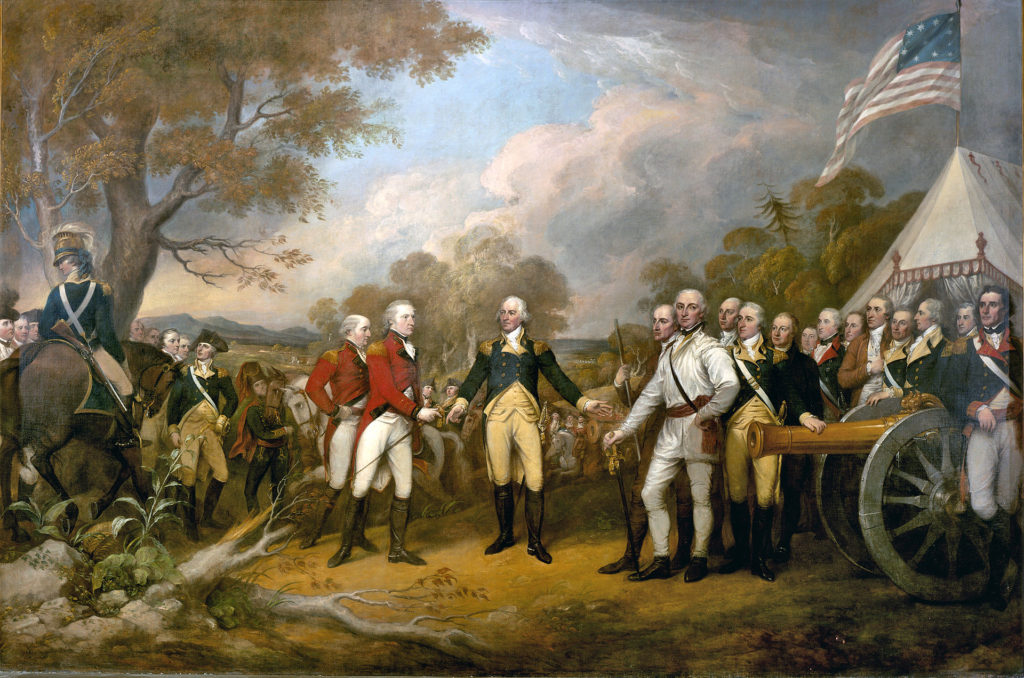Good morning, Whitewater.
Monday in town will be cloudy and warm, with a high of seventy-eight. Sunrise is 7:12 AM and sunset 6:07 PM, for 10h 55m 24s of daytime. The moon is a waning gibbous with 97.7% of its visible disk illuminated.

The scene of the surrender of the British General John Burgoyne at Saratoga, on October 17, 1777, was a turning point in the American Revolutionary War that prevented the British from dividing New England from the rest of the colonies. The central figure is the American General Horatio Gates, who refused to take the sword offered by General Burgoyne, and, treating him as a gentleman, invites him into his tent. John Trumbull, oil on canvas. Via Wikipedia.
On this day in 1777, British General Burgoyne surrenders his entire army following the Battles of Saratoga:
The Battles of Saratoga (September 19 and October 7, 1777) marked the climax of the Saratoga campaign giving a decisive victory to the Americans over the British in the American Revolutionary War. British General John Burgoyne led a large invasion army up the Champlain Valley from Canada, hoping to meet a similar force marching northward from New York City; the southern force never arrived, and Burgoyne was surrounded by American forces in upstate New York. Burgoyne fought two small battles to break out. They took place eighteen days apart on the same ground, 9 miles (14 km) south of Saratoga, New York. They both failed. Trapped by superior American forces, with no relief in sight, Burgoyne surrendered his entire army on October 17. His surrender, says historian Edmund Morgan, “was a great turning point of the war, because it won for Americans the foreign assistance which was the last element needed for victory.[8]
….Once news of Burgoyne’s surrender reached France, King Louis XVI decided to enter into negotiations with the Americans that resulted in a formal Franco-American alliance and French entry into the war. This moved the conflict onto a global stage.[89] As a consequence, Britain was forced to divert resources used to fight the war in North America to theaters in the West Indies and Europe, and rely on what turned out to be the chimera of Loyalist support in its North American operations.[90] Being defeated by the British in the French and Indian War more than a decade earlier, France found an opportunity of revenge by aiding the colonists throughout the Revolutionary War. Prior to the Battle of Saratoga, France didn’t fully aid the colonists. However, after the Battles of Saratoga were conclusively won by the colonists, France realized that the Americans had hope of winning the war, and began fully aiding the colonists by sending soldiers, donations, loans, military arms, and supplies.[91]
On this day in 1970, Pres. Nixon visits Green Bay:
On this date President Richard Nixon traveled to Green Bay to speak at a testimonial dinner in honor of Green Bay Packers quarterback Bart Starr. [Source: The American Presidency Project]
JigZone‘s daily puzzle for Monday is of a boat:
